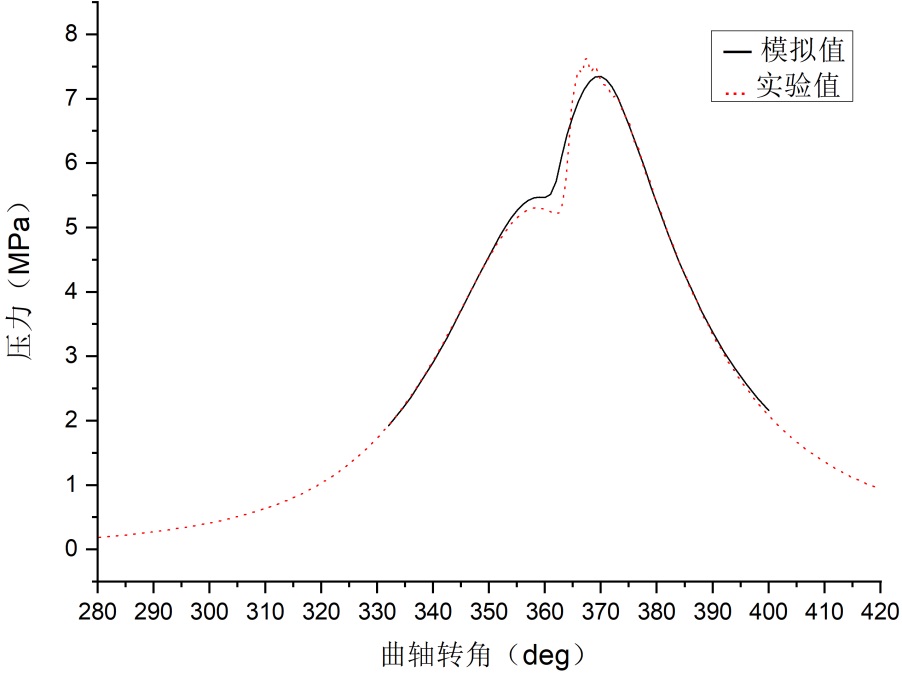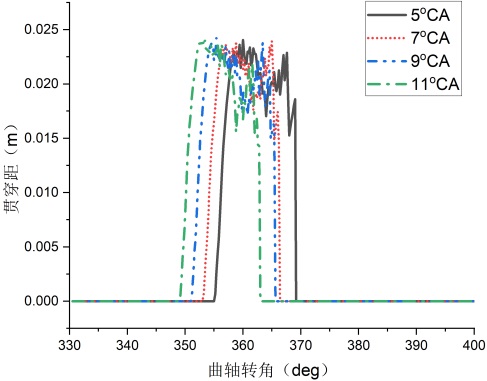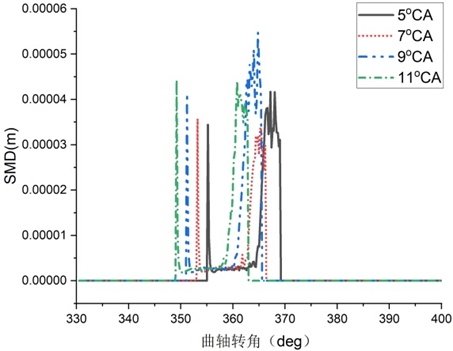DME柴油混合燃料喷雾燃烧数值模拟毕业论文
2020-02-18 10:40:16
摘 要
随着能源短缺和环境污染等问题的加重以及国家对排放法规的调整,对汽车的综合性能提出了更高的要求。为了缓减汽车带来的影响,寻找内燃机的新能源和替代燃料正成为内燃机的科研热点。二甲醚(DME)作为一种新型的车用替代燃料,由于其特殊的理化特性能够实现高效低污染的燃烧,受到了广泛的关注。
基于以上,本研究借助计算流体力学软件AVL FIRE针对型号为YC4FA115-40的柴油机进行建模,对此柴油机燃用DME/柴油混合燃料进行了三维数值模拟。本研究针对DME/柴油混合燃料,选取了合适的仿真模型。在验证了模型的准确性后,根据二甲醚燃料的理化特性,在质量分数为80%的柴油中掺入20%的二甲醚,组成D20混合燃料。之后通过改变喷油提前角、喷油持续期以及喷孔几何特性,对不同情况下发动机燃用D20混合燃料的喷雾特性、燃烧特性及排放特性进行了分析。
研究结果表明:喷油提前角变化对D20燃料的喷雾特性影响较小,喷油提前角增大会使油气混合充分,导致缸内压力和温度上升,NOx排放增加,碳烟排放减少。D20燃料的贯穿距随着喷油持续期的增大而减小,燃油雾化时间随之变短,导致燃烧不彻底,缸内压力和温度持续下降,相应的NOx排放会减少,碳烟排放物增加。喷孔夹角对D20燃料的影响比较复杂,喷孔夹角过大和过小都会导致发动机燃烧水平下降,缸内压力和温度也随之下降,只有在喷孔夹角合理时,燃烧充分,缸内压力和温度维持在较高水平。此外,喷孔夹角增大会导致NOx排放先增加后减少,碳烟排放先减少后增加。喷孔直径的变化决定了D20燃油粒径的变化,喷孔直径变大时会使缸内油气混合不充分,导致缸内压力和温度下降,影响到发动机的热效率,与此同时,发动机的NOx排放减少,碳烟排放增加。
本研究采用三维数值模拟仿真的方法,对各参数变化下D20混合燃料的喷雾形成及燃烧排放的变化规律进行了研究,仿真结果可以为DME/柴油混合燃料在发动机上的使用提供相关依据,对参数标定和优化工作具有指导意义。
关键词:二甲醚;混合燃料;喷雾燃烧;数值模拟
Abstract
With the aggravation of energy shortage, environmental pollution and other problems and the adjustment of national emission regulations, higher requirements have been put forward for the comprehensive performance of vehicles.In order to mitigate the influence of automobile, the search for new energy and alternative fuel for internal combustion engine is becoming the research hotspot.As a new alternative fuel for vehicles, dimethyl ether (DME) has attracted wide attention due to its special physicochemical properties, which can achieve high efficiency and low pollution combustion.
Based on the above, this paper uses computational fluid dynamics software AVL FIRE to model a diesel engine of YC4FA115-40, which burns a DME/diesel fuel mixture for three-dimensional numerical simulation.An appropriate simulation model is selected for DME/diesel fuel mixture.After verifying the accuracy of the model, according to the physical and chemical characteristics of dimethyl ether fuel, 20% dimethyl ether is added into the diesel with a mass fraction of 80% to form the D20 mixed fuel.Then, the spray characteristics, combustion characteristics and emission characteristics of D20 mixed fuel were analyzed by changing the injection advance Angle, injection duration and nozzle geometry characteristics.
The results show that the change of injection advance Angle has little influence on the spray characteristics of D20 fuel, and the increase of injection advance Angle will fully mix oil and gas, leading to the increase of pressure and temperature in cylinder, the increase of NOx emission, and the reduction of carbon smoke emission.D20 fuel penetration decreases with the increase of fuel injection duration, and fuel atomization time becomes shorter, resulting in incomplete combustion, pressure and temperature in the cylinder continue to decline, corresponding NOx emission will be reduced, and carbon smoke emission will increase.The influence of the included Angle of jet hole on D20 fuel is complex. Too large or too small of the included Angle of jet hole will lead to the decrease of engine combustion level and the decrease of pressure and temperature in cylinder. Only when the included Angle of jet hole is reasonable, the combustion will be sufficient and the pressure and temperature in cylinder will be maintained at a high level.In addition, the increase of the Angle of the jet hole will lead to the NOx emission first increase and then decrease, and the carbon smoke emission first decrease and then increase.The change of nozzle diameter determines the change of fuel particle size of D20. When the diameter of nozzle becomes larger, the oil and gas in the cylinder will not be fully mixed, leading to the decrease of pressure and temperature in the cylinder, affecting the thermal efficiency of the engine. At the same time, NOx emission of the engine decreases and carbon smoke emission increases.
In this paper, three-dimensional numerical simulation method is adopted to study the spray formation and combustion emission variation rules of D20 mixed fuel under various parameter changes. The simulation results can provide relevant basis for the use of DME/diesel mixed fuel in the engine, and have guiding significance for parameter calibration and optimization.
Key Words:DME, blended fuel, spray combustion, numerical simulation
目录
摘 要 I
Abstract II
第 1 章 绪论 1
1.1 研究背景及意义 1
1.2 二甲醚燃料的理化特性 2
1.3 AVL FIRE软件简介 3
1.4 燃用二甲醚的国内外研究现状 4
1.4.1 国内研究现状 4
1.4.2 国外研究现状 5
1.5 本文的主要研究内容 6
第 2 章 柴油机喷雾燃烧数值模拟理论基础 8
2.1 基本控制方程 8
2.1.1 质量守恒方程 8
2.1.2 动量守恒方程 8
2.1.3 能量守恒方程 8
2.1.4 组分守恒方程 9
2.2 气体湍流模型 9
2.3 燃油喷雾模型 9
2.3.1 湍流扩散模型 10
2.3.2 油滴蒸发模型 10
2.3.3 油滴破碎模型 11
2.3.4 油滴碰壁模型 12
2.4 燃烧模型 12
2.5 排放生成物模型 13
2.5.1 NOx排放物模型 13
2.5.2 碳烟排放物模型 13
2.6 本章小结 14
第 3 章 柴油机仿真模型的建立及验证 15
3.1 柴油机主要参数 15
3.2 几何模型的建立及网格划分 15
3.3 初始参数和边界条件 16
3.3.1 初始条件 16
3.3.2 边界条件 16
3.4 子模型的选取 17
3.5 计算求解设置 17
3.6 模型验证 18
3.7 本章小结 19
第 4 章 DME/柴油混合燃料的数值模拟结果分析 20
4.1 DME/柴油混合燃料的理论计算 20
4.2 不同喷油提前角下DME/柴油混合燃料数值模拟结果分析 20
4.2.1 喷油提前角对喷雾特性的影响 21
4.2.2 喷油提前角对燃烧特性的影响 24
4.2.3 喷油提前角对排放特性的影响 28
4.3 不同喷油持续期下DME/柴油混合燃料数值模拟结果分析 29
4.3.1 喷油持续期对喷雾特性的影响 29
4.3.2 喷油持续期对燃烧特性的影响 32
4.3.3 喷油持续期对排放特性的影响 35
4.4 不同喷孔夹角下DME/柴油混合燃料数值模拟结果分析 35
4.4.1 喷孔夹角对喷雾特性的影响 36
4.4.2 喷孔夹角对燃烧特性的影响 38
4.4.3 喷孔夹角对排放特性的影响 41
4.5 不同喷孔直径下DME/柴油混合燃料数值模拟结果分析 41
4.5.1 喷孔直径对喷雾特性的影响 42
4.5.2 喷孔直径对燃烧特性的影响 44
4.5.3 喷孔直径对排放特性的影响 47
4.6 本章小结 48
第 5 章 结论 49
5.1 总结 49
5.2 展望 49
参考文献 51
致 谢 54
绪论
研究背景及意义
21世纪以来,由于化石能源(煤、石油、天然气)不可再生,无法继续满足人们日益增长的需求,能源短缺问题已经成为人类急需解决的大事,与此同时,排放法规的修订执行,导致汽车行业在当下遇到了严峻的挑战。根据公安部交管局发布的数据,今年我国的汽车保有量有近三亿辆,这就意味着每十个中国人就有三个人拥有汽车。汽车的便利性获得人们的认可,与此同时,人们的关注点也在向汽车带来的负面影响上转移。
汽车排放出的尾气成分众多,常见的排放物如NOx、SO2、HC、CO、soot等都会对人类的生存环境带来困扰,而且这些排放物之间可以相互作用造成二次污染。受制于现阶段尾气处理技术的水平,汽车尾气排放对环境的破坏日渐加重,因此我国制订了严格的车辆尾气排放法规。譬如我国即将推行的国六排放标准,就是在国五的基础上加大了排放规范,两者的区别见表1.1。
表1.1 国五和国六排放物要求
排放物(mg/km) | 国五 国六 |
汽油车 柴油车 国六A 国六B | |
CO | 1000 500 700 500 |
NMHC | 68 - 68 35 |
NOx | 60 180 60 35 |
PM颗粒物 | 4.5 4.5 4.5 3 |
PN/km-1颗粒数 | - 61011 61011 61011 |
为了减缓汽车带来的影响,科研工作者研发出了许多新型的燃烧方式及排气后处理技术。与此同时,各界也在努力寻求缓解车用能源短缺问题的有效方法。因此,寻找内燃机的新能源和替代燃料正成为内燃机的科研热点,也取得了一定的发展,如醇类燃料、液化石油气等。而二甲醚作为一种高效的车用替代燃料,引起了科研工作者的关注。二甲醚作为内燃机替代燃料的优势相比其他液体替代燃料非常明显:DME的制造化学工艺相对简单成熟,其十六烷值比柴油高,特别适合作为柴油机的混合燃料。此外,DME中不存在C-C键,有利于同时减少氮氧化物和碳氢化合物生成。所以,如果搭配适合比例的DME与柴油混合,促进柴油机的缸内气流运动,就能形成优质的缸内混合气,从而极大提高柴油机的性能,减轻排放压力。
基于以上,本文采用FIRE软件针对DME/柴油混合燃料进行数值模拟,深入探究喷油提前角、喷油持续期、喷孔夹角等参数对喷雾特性和燃烧特性的影响。采用三维数值模拟的方法进行CFD仿真模拟,可以有效分析各种参数变化的情况下柴油机混合燃料的喷雾形成及燃烧排放的变化规律。仿真结果可以为实验给予一定的指导依据,为DME/柴油混合燃料在发动机上的使用提供相关依据。
二甲醚燃料的理化特性
二甲醚的十六烷值相对于其他燃料比较高,具有良好的自燃性,常用作柴油机的代油燃料[1]。二甲醚与柴油的性能对比见表1.2。
表1.2 二甲醚与柴油燃料性能对比
项目 | 柴油 | 二甲醚 |
化学分子式 | C12H26 | CH3-O-CH3 |
分子量 | 190-220 | 46 |
沸点(℃) | 180-360 | -24.9 |
密度(kg/m3) | 840 | 668 |
当量空燃比 | 14.6 | 9.0 |
十六烷值 | 40-55 | 55-66 |
汽化潜热(kJ/kg) | 250 | 410 |
低热值(MJ/kg) | 42.5 | 27.6 |
爆炸极限(%) | 0.6-6.5 | 3.4-17 |
自燃温度(℃) | 250 | 235 |
粘度(CP) | 3 | 0.15 |
蒸汽压(kPa) | - | 5.1 |
弹性模量(108N/m3) | 14.86 | 6.37 |
碳含量(%) | 86.0 | 52.2 |
氢含量(%) | 14.0 | 13.0 |
氧含量(%) | 0 | 34.8 |
根据二甲醚和柴油性能的对比,可以发现二甲醚具有以下优点:
(1)从分子式看,柴油分子结构含有C-C键,而二甲醚是最简单的醇类化合物,分子结构中只含有C-H键和C-O键,没有C-C键[2]。这表明二甲醚作为燃料有利于减少柴油机燃烧过程中产生的碳烟和微粒。二甲醚分子的氧含量高达34.8%,远远大于柴油,因此理论上相同质量的二甲醚在燃烧时所消耗的空气量更少,有利于燃烧。同时,二甲醚的结构使它可以利用其他减排技术来进一步降低碳烟的排放。
以上是毕业论文大纲或资料介绍,该课题完整毕业论文、开题报告、任务书、程序设计、图纸设计等资料请添加微信获取,微信号:bysjorg。
相关图片展示:
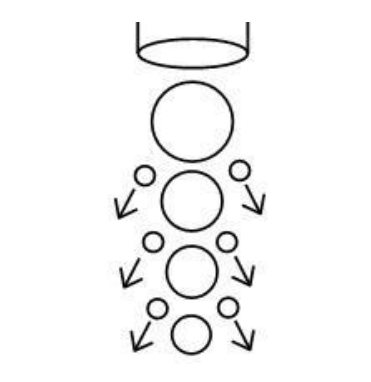
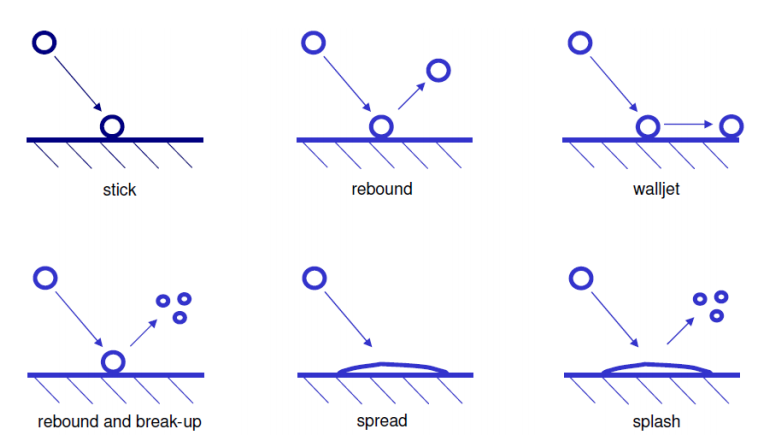
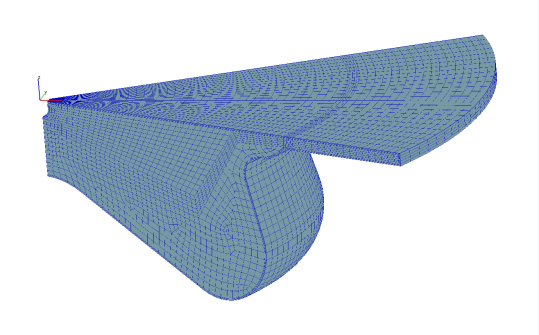
![C:\Users\zhaotiantian\AppData\Roaming\Tencent\Users\1521118041\QQ\WinTemp\RichOle\0IEQRW5@F]A5J4ZF@3YYUMN.png](http://www.biyelunwen.org/wp-content/uploads/2020/02/lw4583_2020218104011359.png)
